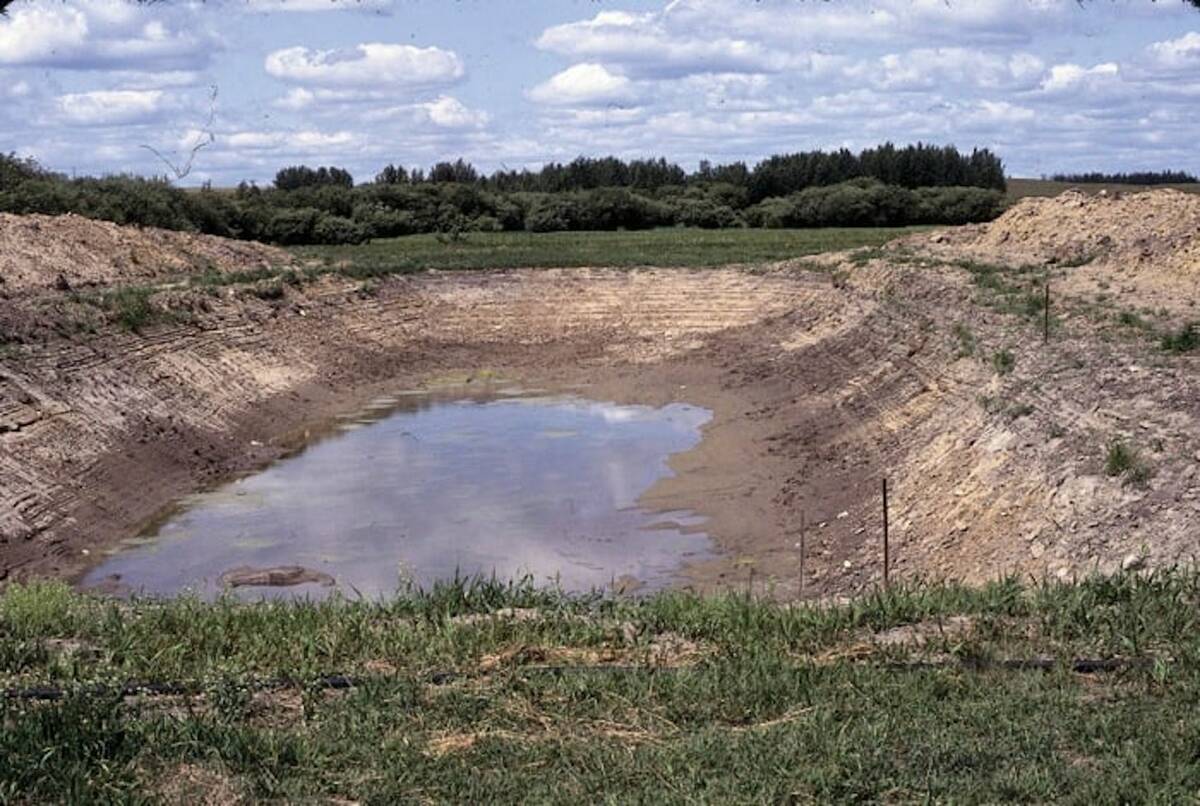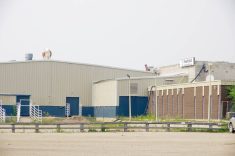Canadians struggling to regain Asian markets lost after BSE was found in North America last year feel betrayed by the United States.
Canada believed it would work with the U.S. to promote a harmonized North American approach in Asia after the U.S. discovered a BSE infected cow last year.
“This has not proven to be the case,” said Ben Thorlakson, chair of the Canada Beef Export Federation.
“The U.S. differentiating itself from Canada has served to underscore the fact that we must be more aggressive in working to establish trade on our own merits,” he said at the Canadian Cattlemen’s Association annual meeting in Calgary on Aug. 18.
Read Also

Dry summer conditions can lead to poor water quality for livestock
Drought conditions in the Prairies has led to an decrease in water quality, and producers are being advised to closely monitor water quality for their animals.
The U.S. has argued for a higher trade status because its case traced back to a Canadian import, thus it does not have BSE on its soil.
But so far Japan shows little willingness to resume trade except on its terms. These include vacuum extraction of the spinal cord prior to carcass splitting and mandatory testing of all animals destined for meat exports to Japan, said Ted Haney, president of the federation.
There are differences of opinion within the Japanese departments of agriculture, health and the food safety commission. Agriculture is the only department requesting 100 percent testing of all slaughtered cattle.
The U.S. is confident Japan will restore trade soon, but there are mixed messages from Japanese news reports and government officials.
The news service Meating Place reported last week that Macromill, a Japanese on-line research company, learned almost 40 percent of people in Japan do not want to eat U.S. beef, while 20 percent do.
The survey reported 40 percent favour universal testing of all cattle from the U.S. as a condition to resume importing beef. The poll took place in early August and questioned 1,033 people aged 20-59 living in Tokyo.
If Canada must go it alone, it needs to do several things, said Thorlakson.
- A full-time, permanently appointed Canadian veterinarian needs to speak for Canada in Asia. A resident expert could address questions and remove technical barriers when trade disputes arise.
- A more consistent world policy is required to allow safe imports from BSE infected countries.
- A complete revision of feed regulations is required.
- Canada must reach the BSE testing levels of 8,000 head this year and 30,000 next year.
- An insurance policy is needed to help international customers commit fully to Canadian beef without fear of facing unfunded beef detention costs in the event of another BSE case in Canada. When borders closed last year, South Korea was stuck with unwanted Canadian beef in containers that the Alberta government finally paid to remove.
- The Canadian Food Inspection Agency duties must be realigned to make it responsible primarily for enforcement of regulations, while returning plant and animal health issues to Agriculture Canada.
“It is in no way intended to reflect on the quality or efforts of the existing staff, but we need a focus for trace advocacy,” said Thorlakson of the latter recommendation.
- Trade negotiation responsibilities should be shifted to a new Agriculture Canada trade relations directorate whose sole responsibility is to open markets.
By doing all this, Canada hopes to pick up trade with other countries and reduce its reliance on the United States market. That means exporting 300,000-500,000 tonnes of beef to other destinations by 2010.
“Achieving this goal would not only maximize carcass value, but also decrease our beef export dependence on the U.S. by 50 percent,” Haney said.
Canada has regained markets in 40 countries this past year, Haney told the CCA convention.
The best bet is returning to Asia, which imports 800,000 tonnes of beef a year. That is equivalent to two million head of cattle.
“This is the demand that Canada and the U.S. are unable to serve in Asia and this is a tremendous market potential that we must get back into,” said Haney.
Former customers present different challenges.
Japan does not appear ready to resume trade any time soon, but it has officially requested access to the Canadian market. It continues to send mixed messages on testing as well as slaughter requirements. Australia has increased exports there but Japan remains short of its annual import needs by 250,000 tonnes.
South Korea is expected to follow Japan’s lead and negotiations continue to remove some product stranded there after last year’s beef ban. It is short about 300,000 tonnes of its annual beef import requirements, Haney said.
Taiwan is still conducting risk assessments on how to restore trade with Canada, while also banning European imports where BSE exists.
Hong Kong has requested a video demonstrating Canada’s specified risk material removal procedures, which the CFIA will supply.
China allows bovine semen and is working on regulations to accept tallow and embryos. It is a potentially valuable market because of its ability to take lower-value cow and organ meats.
Canada has shipped about 1,000 tonnes of beef to both Macau and the Philippines. However, the principality of Macau only has 600,000 people and the Philippines changed its list of acceptable products after the U.S. declared its case Dec. 23.
Mexico has been Canada’s strongest supporter, but tensions with the U.S. made product movement difficult. The U.S. threatened to downgrade Mexico’s BSE status if it moved ahead of the U.S. approved product list and accepted Canadian livestock or bone-in products.
Nevertheless, Canada made some gains in the last 16 months.
Statistics Canada reports Canadian beef exports were low until last September when the U.S. allowed some beef products into the country. Exports started climbing during the fall, almost reaching pre-BSE levels of about 40,000 tonnes per month.

















